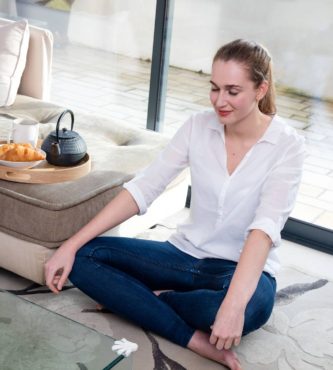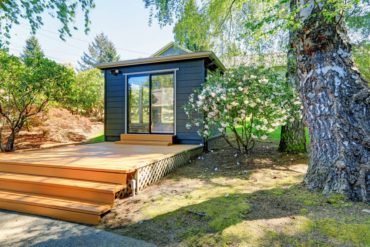 A great deal has been written about mental comfort zones. The internet is full of Venn diagrams with a puny circle titled “your comfort zone” and a large circle with no overlap titled “this is where the magic happens” — implying that you must leave your comfort zone altogether to experience any magic.
A great deal has been written about mental comfort zones. The internet is full of Venn diagrams with a puny circle titled “your comfort zone” and a large circle with no overlap titled “this is where the magic happens” — implying that you must leave your comfort zone altogether to experience any magic.
 The notion that “a comfort zone is a beautiful place but nothing ever grows there” reinforces the popular idea that nothing new or interesting develops in a comfort zone. But do these rules also apply to home comfort zones? What might one even look like?
The notion that “a comfort zone is a beautiful place but nothing ever grows there” reinforces the popular idea that nothing new or interesting develops in a comfort zone. But do these rules also apply to home comfort zones? What might one even look like?
A home comfort zone is a place where we feel at home, familiar and welcomed. It is a retreat where we can go to recharge after a long day at work or after finally getting the kids off to school.
It is a nesting place where we have our favorite things around us: our chair, our lamp, our music, our tools, our stuffed animals. The Venn diagram for the physical comfort zone is the exact opposite of that above: “the magic happens here” rests inside the home comfort zone.
 The two kinds of zones complement one another: We need to leave our mental comfort zones to grow and learn and we need to return to our physical comfort zones to recharge.
The two kinds of zones complement one another: We need to leave our mental comfort zones to grow and learn and we need to return to our physical comfort zones to recharge.
At the end of a long day of trying new things and encountering many people — thereby stretching our mental comfort zones — we need to perform a strategic retreat.
A home comfort zone is not supposed to be a place for growth and challenge. Instead, it is a warm, familiar and cozy place to decompress from the pressures of life. Just as our electronics need to spend time in the charging station to be useful, we need our own charging station to be able to function well in a comfort-zone-stretching world.
 A comfort zone looks different for different people. If you live alone, it may be your whole house or apartment. When several people share a space, they often parcel out their own areas to which they retreat when they need to return to their charging stations.
A comfort zone looks different for different people. If you live alone, it may be your whole house or apartment. When several people share a space, they often parcel out their own areas to which they retreat when they need to return to their charging stations.
For many of us, it is our bedroom or living room. For some, it is the studio or workroom. Even the bathroom is a comfort zone for some because it is the only place where they feel that they can be alone and uninterrupted.
Let’s try an experiment. Go to your home comfort zone and take a look around. Do you like what you see? How does it make you feel? Are you happy to be in the space? Do you feel supported? If not, then it is time to make sure your recharging station actually energizes you.
It needs to fit you: Do you have a place to sit or lounge that fits you and supports your body? Do you have the things around you that you need (i.e. a reading lamp, a table to set things down on, plugins for your devices)?
It needs to give you energy: You should leave the space with more energy than you came with.
 It needs to be easy to access: If your comfort zone is an outdoor yoga shed that is being used to store lawn furniture, it’s not going to work for you.
It needs to be easy to access: If your comfort zone is an outdoor yoga shed that is being used to store lawn furniture, it’s not going to work for you.
It needs to be your space: Even if the space is shared, it needs to feel like yours. Others should understand that this is not the place to toss their dirty laundry or half-read magazines.
It needs to feel comfortable: This may seem self-evident, but it is worth going to your home zone and asking yourself whether you actually enjoy being there or if piles of unfinished work or clutter make you want to run away as fast as you can.
The better you make this recharging space for yourself, the more you will use it, increasing your zest to reach beyond your boundaries for the magical growth opportunities awaiting you in that (not always so comfy) big circle of the Venn diagram called life.


























Comments